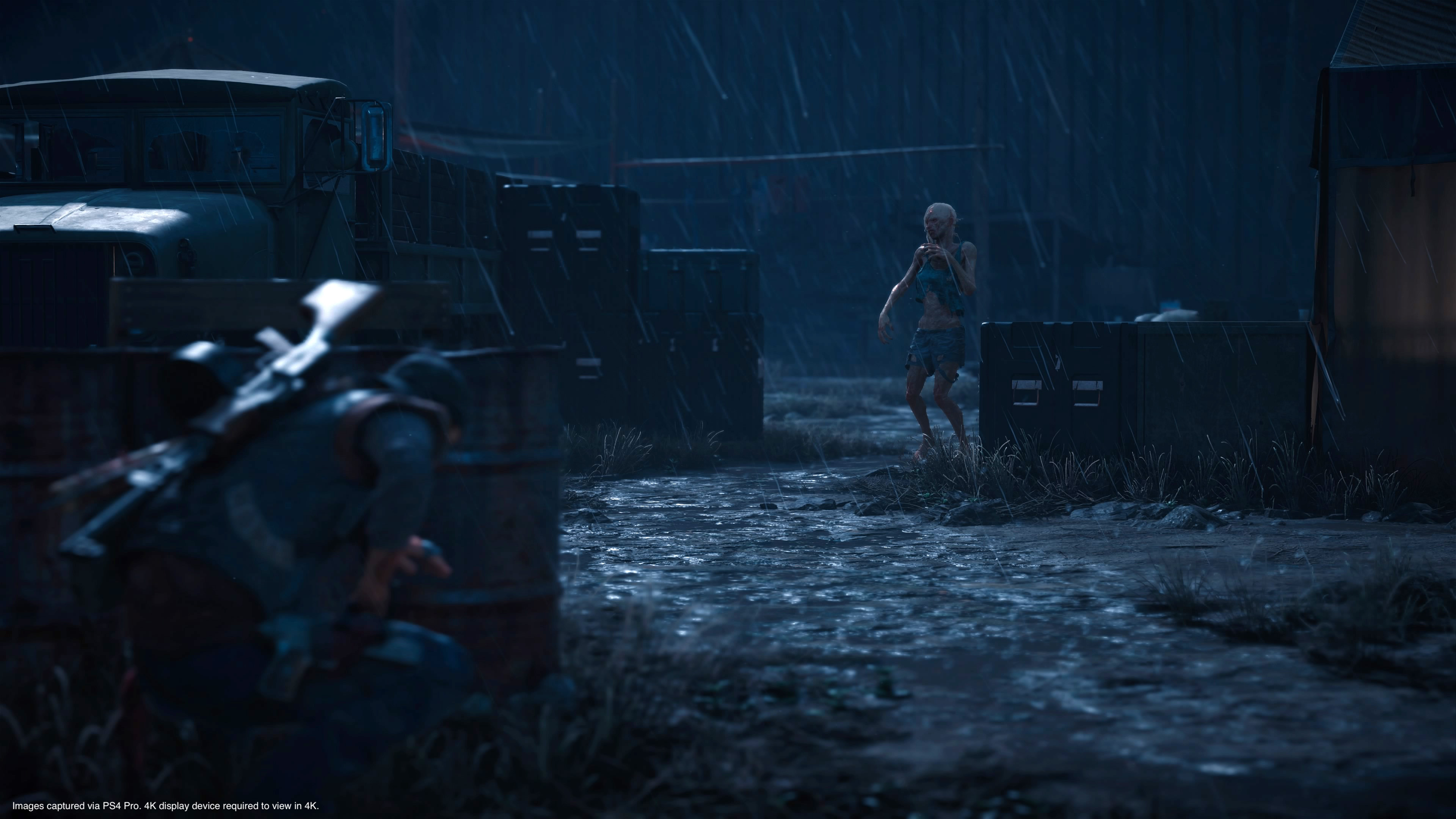'Days Gone' Is a Parody of Big Budget Video Games
In 2019, most big budget video games hit a few familiar beats: an open world, an angry man, and maybe even a travel section set to poignant music. Days Gone-a video game about a biker fighting zombies and mourning his dead wife in post-apocalyptic Oregon-has an open world, an angry man, and two travel sections set to poignant music.
Days Gone,a new PlayStation 4 exclusive from developer SIE Bend Studio, wants you think it's a big budget video game just like The Last of Us, Assassin's Creed, or Red Dead Redemption 2. After roughly 40 hours with the game, I can say that doesn't do anything as well as those games, and its attempt to check all the boxes just reveals how tired and arbitrary the big budget game formula has become.
Read More: 20 Hours in, 'Days Gone' Is an Ugly, Miserable Experience
In Days Gone, a viral plague has almost wiped out humanity. The virus doesn't kill people, but turns them into "freakers"-ravenous monsters that love eating people. They're zombies, but Days Goneinsists on sticking to freakers and you'll never hear anyone utter the Z-word, despite how cringe-inducing it is to hear the game's characters say "freaker." After society collapsed, various factions of humans rose up, all vying for power in Oregon.
The 40 hours it took me to beat Days Gone were as generic as anything I've seen in a big budget video game. It plays like The Last of Us mixed with Far Cry. By that I mean: there's a big map with lots of activities, a long and melodramatic story, the ability to equip and upgrade your character and his motorcycle, and a laundry list of side quests.
Instead of climbing towers to unlock portions of the map like in Far Cry, I descended into bunkers to find maps of the surrounding area left behind by survivalists. Clearing out zombie (sorry, uh, "freaker") infestations and killing camps of rival humans made the roads safer. NERO (a FEMA analogue) checkpoints granted a little backstory and upgraded my character's health, stamina, and a focus meter that allows you to slow down time when aiming a gun.
Weapons degrade over time in Days Gone, and I had to collect scrap from cars to repair them, much like in The Last of Us,Sony's other big budget zombie game from developer Naughty Dog. This crafting system, and the desperate human-on-human fights in a world full of zombies are straight out of Naughty Dog's modern classic. The similarities invite the comparison, but it does Days Gone no favors.
When you're not fighting human survivors, though, you're fighting freakers. There are different types of these enemies, and they're all straight out of Valve's successful co-op zombie shooter series Left 4 Dead. There's the fast zombie, the tank with lots of health, the lady zombie who screams and calls the other zombies, and half a dozen others.
Sometimes these zombies gather together in packs called a horde-a gathering of hundreds of zombies that requires planning and precision to kill. Taking on zombie hordes is fun, and an opportunity for Days Gone to differentiate itself, but I only fought two of them of the course of the entire game.
In Days Gone, the hordes are always on the horizon, a threat that survivors talk about constantly but don't encounter until the game's final moments. I occasionally ran into hordes in the wilderness, but always lacked the tools to deal with them. I eventually unlocked a napalm molotov that helps to kill hordes, but not until the game's final hours. I unlocked the ability to track hordes on the minimap, but only just before the game's final mission. As far as I can tell, this isn't because I missed something, but because Days Gone held back killing hordes until I'd spent dozens of hours killing humans.
This is Days Gone's biggest mistake-it hides its one original idea at the very end of a very long game. Most players won't take on hordes of zombies unless they're willing to slog through dozens of hours of story missions and activities that are by now all too familiar in big budget games, and raw disappointment.
As I explored the zombie-infested world of Days Gone, I'd often encounter blue question marks. These question marks pointed me to random encounters-sometimes strangers trapped by zombies, groups of men waiting to kill me, or, bafflingly, nothing at all. Early during my playthrough, I'd get off my bike and follow these cues, but too often there was either literally nothing at the marker-I was never sure if this was a bug or a design choice-or yet another generic fight with bad guys that I didn't want to have.
 Image: Sony
Image: Sony On all the sensitivity settings, the controls feel imprecise and sluggish. I was always either over-correcting or under-correcting my aim, never quite able to put the crosshairs on the enemy I wanted. When I didn't want to shoot, which was often, I'd creep through the bushes and decapitate people with a baseball bat I'd crafted into a battle axe. The melee combat is better than the shooting, but only because it's functional. In practice, killing a bad guy with a baseball bat means mashing the attack button until he's dead.
Eventually, I started skipping the blue question marks, which ended up being shorthand for an empty promise. Days Gone is full of empty promises.
By the time the credits rolled, I wasn't only tired of Days Gone, I was tired of the entire school of big budget game design it was trying to emulate. Look, I love big, expensive, beautiful-and let's face it-often very stupid video games. But there's no reason they all have to be the same. I wouldn't mind playing another zombie game with a brooding, shotgun-wielding protagonist, but only if it stops checking boxes and gives them something new to do.